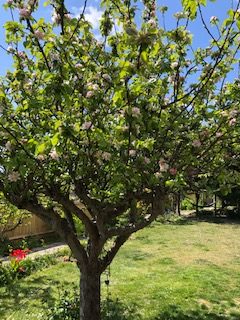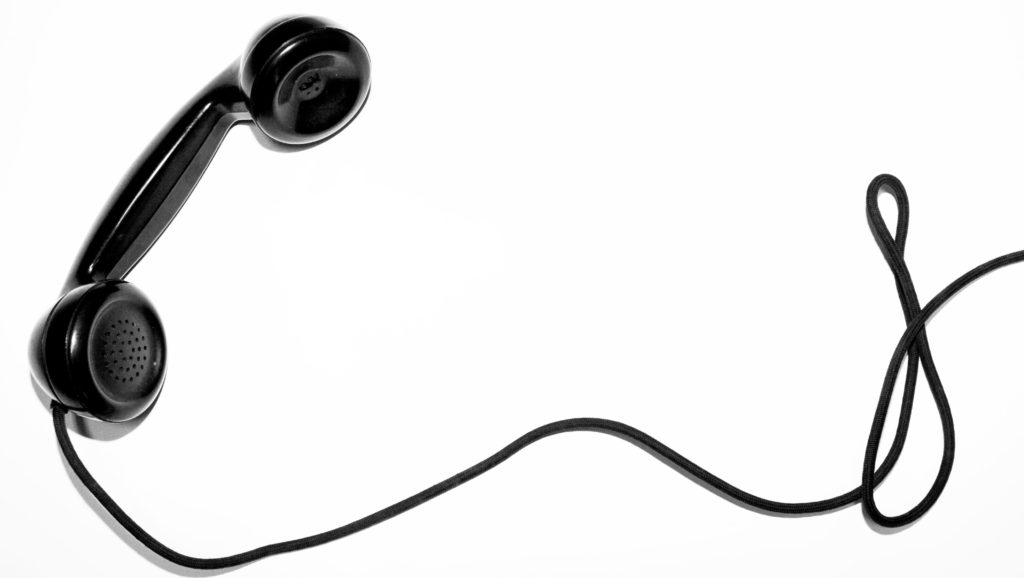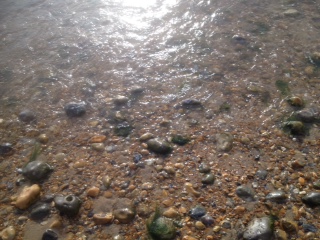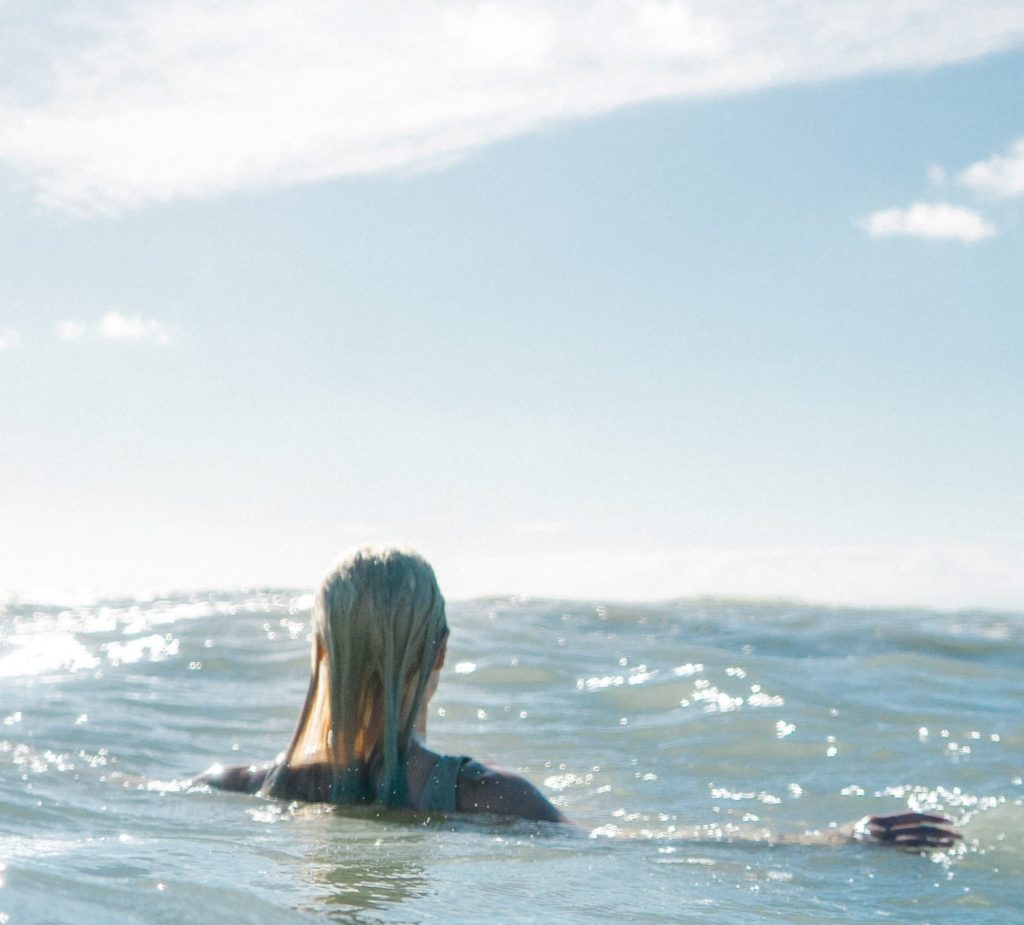This last weekend, my husband was away at a trade show, so my normal routine of yoga and meditation in the quiet of my bedroom was disrupted. I had to get up early and let Hermione have her run around the garden. It was a beautiful day, so I decided to try it alfresco. Despite being a chilly 10 degrees Celsius, the experience was enhanced by the location. Weather permitting, I’ve decided to continue this way as far into winter as I dare!
It’s taken me a very long time to reach the point where I would not consider starting the day without these physical and mental exercises, but their benefits have been immeasurable. The good news is that one can start small and work up. I vividly remember the agonies of trying to concentrate through a five minute guided meditation every evening. Now my half hour, unguided one, goes in a flash. The key, it seems, is in regular practice (even if that is only ten minutes a day).

Image: Karen Costello-McFeat
Finding what is right for you
I have lost count of the number of people I have spoken to who find meditation either impossible or something that they cannot seem to find time for. Perhaps part of the reason for this is that it is, as a product, hugely mis-sold. Meditation does not eliminate stress from your life (but it does help you deal with it); nor does it turn you into a calm, perfect human (though it might help smooth your edges) and most importantly, it does not require you to jettison all thoughts to reach a state of Zenlike bliss. Meditation, like prayer, is all about directing thought rather than obliterating it.
When random thoughts arise, we greet them and let them go, bringing our attention back to our point of focus. This may be our breath, a candle or a prayer. It requires discipline and endless repetition. The Dalai Lama continues to meditate for hours every day. Even he would not suggest that he had no need of further practice. So if you are looking for a quick fix, this isn’t for you. However, if you are looking for a method that has been proven to improve your mental and physical well-being, here are some approaches you might try.

Image: Karen Costello-McFeat
Ways in
If you look on-line, you will find countless and many very good sources on meditation. I have tried a number of them and have a rather eclectic mix that I call my own. The one that I think of as being the best way to begin though is the listening meditation, as it helps reinforce the idea of focus and requires no more from you than simply to sit quietly.
This is one that I love to do in the garden. Sit on the ground cross legged, or on a chair with your feet on the ground and back straight. (If you lie in a deck chair, you are liable to fall asleep!) Start to listen to all the sounds around you. As your meditation deepens, you will hear ever quieter sounds that you have probably never noticed before. You don’t have to close your eyes, but do if that makes it easier. Set a timer for at least ten minutes. Take a moment to return to the world and say a thank you for what you have heard.
Alternatively, you can keep the same posture and contemplate a specific aspect or even object – like a flower. As your focus deepens, you will uncover richer layers of observance. Again, do this for as long as you can and try to observe mindfully throughout the day.
Breathing meditations are probably the most common form. I use the Wim Hof method, because the breathing structure and breath-holds don’t give you much option to let your mind wander.
You may want to do this one lying down, as it can leave you a little light headed.
If you want to meditate throughout the day, taking a few moments to concentrate on the breath – filling your lungs fully and then feeling the air exit passing gently over your mouth – is a great way to ground yourself.
Devising your own regime
Perhaps I was a magpie in a past life, but I have a terrible habit of acquiring things and forgetting to let them go. My meditation practice is no exception. As a result, all the elements that I have found useful over the past ten years have now found a home in my current routine. I don’t recommend that you necessarily do the same, but I do think that it is helpful to take a flexible approach. One form of meditation may fit perfectly, another may not – or not at the moment. No-one is watching and certainly no-one is judging your performance. Do what works for you.
So what is my daily practice? It begins with a little yoga. The stretching and focus on my body seems to help me get into the right zone for meditation. What follows is a mix of Wim breathing, imaging and loving kindness prayer. The loving kindness meditation is a classic one and helps us find compassion in our attitudes to even those who are our enemies or simply irritate us to death.
The version I use, based on a haunting musical interpretation, goes like this:
May I be filled with loving kindness, may I be well
May I be filled with loving kindness, may I be well.
May I be peaceful and at ease, may I be whole.
And here’s the musical version if, like me, you enjoy singing.
I begin my meditation lying down and with the breathing Wim advocates, then during the breath-hold, I do the loving kindness prayer. With each cycle of breathing, I add another loving kindness object. Starting with myself, I move outwards from family to friends to those I do not care for too much. Some like to think of an area they live in and move to the world. I do that sometimes too.
Towards the end, I focus on healing kindness and imagine my body repairing itself. I have exquisite gold tipped butterflies that inhabit my brain and spinal chord and keep it free from lesions. (Don’t laugh, my latest MRI shows it is working!)
During the final stage, I simply reorient myself in the world. (You can feel a bit spacey at this point). I observe all the beauty around me and give thanks for the privilege of inhabiting such a magnificent creation. And now I am ready for the day.
Nothing is perfect
If this is all sounding a little too idyllic, I should perhaps mention that I have a little helper when it comes to my morning rituals! Hermione would never wish to be left out of anything, so yoga is performed with care so as not to squash the dog under my belly and meditation is conducted between throws of her Kong.
Does this bother me? Not particularly. Life is never going to accommodate you perfectly and accepting interruptions, noise and distractions and working through them is very much part of the discipline of these practices. If we are waiting for the ideal situation, we would never start at all. So, let us begin.

Image: Karen Costello-McFeat










